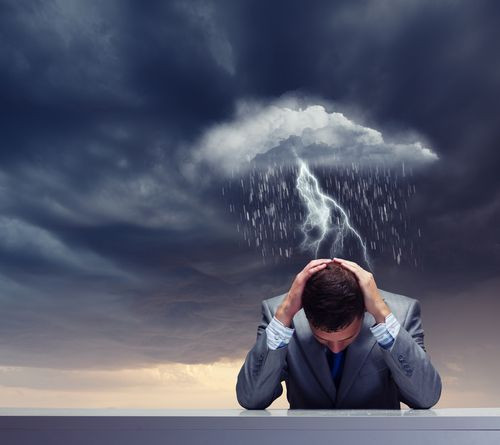What Is Bipolar Disorder? This Is What It's Like To Have The Condition

Vincent van Gogh, Virginia Woolf, Kurt Cobain. What do these uncommon and distinctive personalities have in common? Bipolar disorder.
Sometimes called manic-depression, this brain disorder causes dramatic mood swings from depressing lows to manic highs. Although this mental illness is often portrayed in poetic terms, with patients experiencing unimaginable euphoria and indescribable despair, the hard truth is much less elevated, much more mundane. Symptoms are individual-based and mood shifts may occur as frequently as several times a day or as rarely as a couple times a year. Some sufferers find their illness to be highly disruptive. During a depressive mood, they feel hopeless and lose interest in their usual activities… and then the manic period causes opposite feelings, including grandiose delusions and high-wire energy. In more rare cases, bipolar disorder causes symptoms of depression and mania at the same time.
Descriptions abound, so why not go to the source? Dr. Kay Redfield Jamison is a full professor of psychiatry at Johns Hopkins School of Medicine as well as a diagnosed patient who suffers from bipolar disorder. During an interview with Big Think, Jamison describes being psychotic in her own words: “I've went around the solar system, I went to Saturn in my mind's eye. I went through star fields. It was a glorious sort of ecstatic experience. … But I also had some very bad [experiences]. I've been hallucinating myself as dead or just covered with blood.”
Psychosis is a common experience among patients in a manic phase and along with hallucinations, it may include paranoia or delusions of being someone else. “Mania can be as terrifying as it gets,” Jamison said. “It is certainly as insane as one gets and so it's frightening when it gets out of control…” Psychosis comes in different forms to different people. In the words of a friend, who asked to remain anonymous, “I walked around for about a year thinking that people on TV were talking to me. Like, to me.” Biting her lip, she thinks about it for a moment. “But what’s important is that it’s very low-level at times. Plus, it’s not like it’s happening all the time. Just sometimes. So somehow I lived with this weird delusion, on and off, and until it all boiled over — I couldn’t sleep for days on end and then I really became strung out. But until that happened, I didn’t really know anything was wrong even though the delusions and paranoia had been going on for months.”
Mania, then, may be nothing like the dreamed of feel-good high. And inevitably, in most cases of bipolar disorder, there comes depression. Describing her own symptoms, Jamison told Big Think: “In depression, your capacity to feel just flattens and disappears and what you feel is pain and a kind of pain that you can't describe to anybody. So it's an isolating pain, a completely isolating pain. It's … a deadening lethargy coupled with an agitation and restlessness at times, but it’s the sense of having no energy, no interest, no passion, no life…. And the pain is agony, it just is unrelenting… At some point I tried to kill myself.”
Suicidal thoughts are unfortunately common among people with bipolar disorder, an illness with no one cause but several factors acting together to produce the symptoms. Because it runs in families, there’s a high likelihood that a genetic basis exists yet doctors do not discount environmental factors, which are known triggers, and include extreme stress, sleep disruption, drugs, and alcohol.
What is possibly most important to remember is that Bipolar disorder is treatable with various mood-stabilizing drugs. It is recommended patients begin treatment early and remain on their medication continuously as a break from treatment might propel a patient into a dramatic mood change. Naturally, this consistency is difficult for many patients; after all, very few people wish to accept a diagnosis of a life-long illness, especially when the onset begins in early adulthood. In other cases, medications cause weight gain and possibly a listless feeling among those who are used to the high energy of mania.
Jamison, though, believes that contemporary treatments offer a greater range of possibilities for patients. She described herself to Big Think as a “huge advocate of prescription drugs given wisely and for the right reasons and the right diagnosis and also psychotherapy.” She noted one downside: “I think that one of the unfortunate aspects of prescription drugs working well is that people tend to think that's enough. Usually it's not enough; sometimes it is.” She also recommends patients seek psychotherapy, which “saves lives and is hugely meaningful.”
What is important to remember is this illness may be somewhat rare but it is treatable and manageable. It affects an equal number of men and women who number 5.7 million (about 2.6 percent) of the U.S. adult population and it is most often diagnosed at age 25. Those who are newly diagnosed may have their doubts, but plenty of sufferers are currently living happy and highly productive lives. According to Jamison, the key is medication, patience, and a true commitment to wellness.
Published by Medicaldaily.com



























